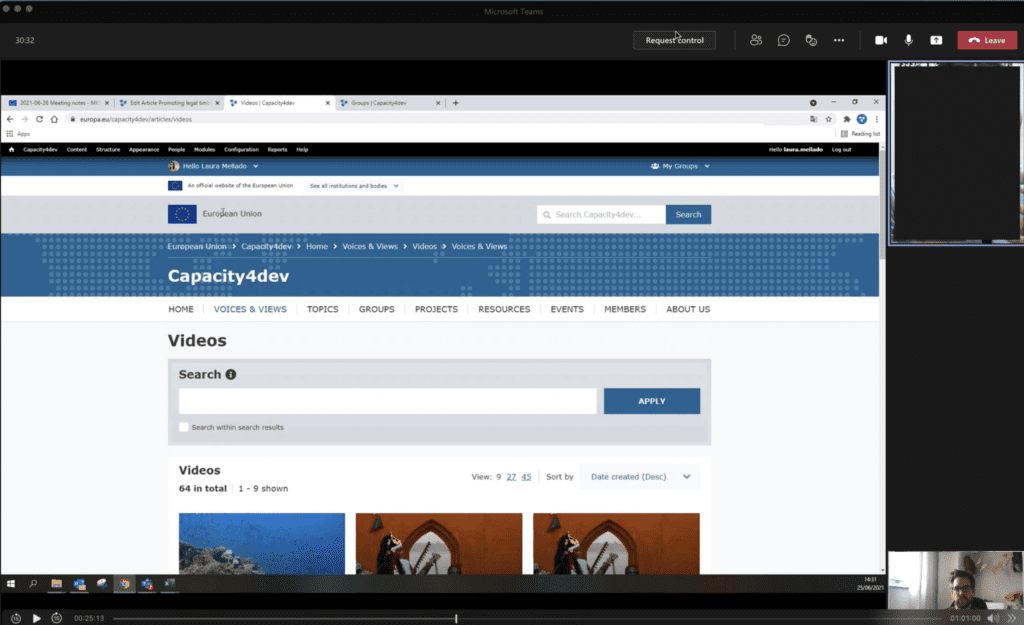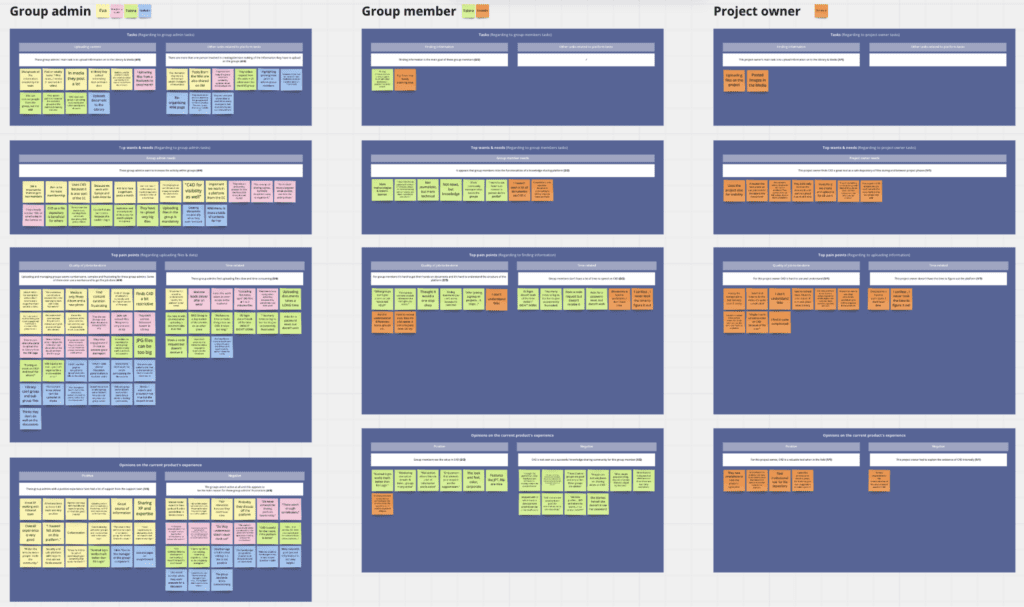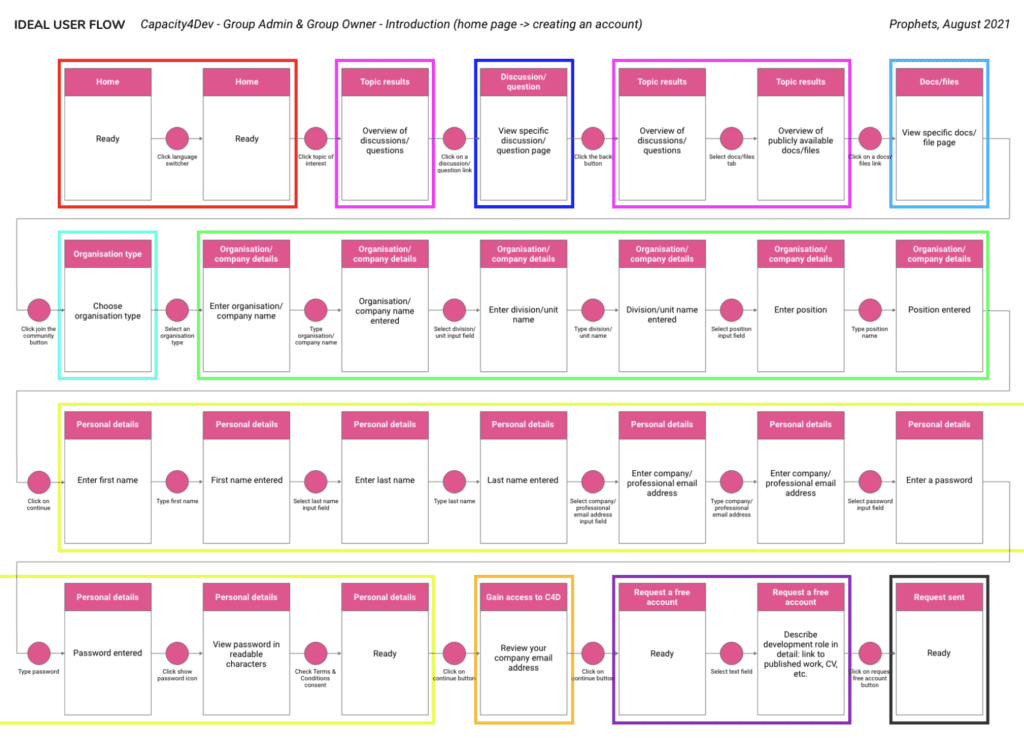EC Knowledge Platform: From Misaligned Strategy to User-Centered Redesign
The Challenge
In 2021 the European Commission (EC) sought to revamp its Capacity4Dev knowledge-sharing platform. The initial communication strategy proved misaligned with user needs and wouldn’t solve core pain points. My task was to revisit that strategy, identify a user-centered solution, and guide implementation to align with the EC’s broader goals of effective knowledge exchange.
Role & Responsibilities
As UX Strategist at iO, I led research, analysis, problem definition, value proposition creation, information architecture, concept design, prototyping, MVP definition, functional/technical analysis, story mapping, and stakeholder collaboration.
A Strategic Pivot
After analyzing the original strategy and existing research data, we collaborated with the Capacity4Dev team, subject matter experts, and customer support. This revealed the proposed concept wouldn’t address user needs. We earned trust to pivot the project, using additional research to uncover true user pain points.
Research & Insights
- Context Matters: Due to diverse user profiles, contextual inquiries were vital for understanding unique workflows and needs. COVID limitations led to remote observation, which reduced some insights into natural behaviors.
- Broader User Picture: An online survey, conducted in consultation with the Capacity4Dev team, provided a larger sample size to further define user goals.
- Tapping into Existing Data: Insights from past research helped us map user behaviors and mental models.

Analysis & Strategy
Thematic analysis revealed core user problems. Workshops with stakeholders built shared understanding and led to insights-driven personas and customer journey maps. We used an HMW workshop to focus feature discussions around solving verified user problems.


Strategic Redesign
- Defining the Value: The research findings uncovered a misaligned value proposition. We collaborated with the Capacity4Dev team to craft a new one, centered on solving those core user problems.
- Information Architecture as Strategy: A thorough content inventory informed a new IA that directly supported the revised value proposition. Early sketches allowed for quick iteration and integration of the new strategy.
- User-Centric Flows: Ideal user flows were designed for the most complex interactions, ensuring the core functionality aligned with user needs.
- Medium-Fidelity Prototype: This allowed for iterative testing with users and SMEs to validate our concept for this complex platform.



Outcomes
Testing showed significant improvement in user experience, but due to my absence, exact metrics are unknown. This new concept was documented as an MVP (Version 1). As UX professionals, we oversaw functional/technical analysis, prioritizing the user experience while collaborating with developers. User story mapping, conducted with technical experts, enabled a user-centered MVP roadmap.
Learnings & Next Steps
- More Robust Personas: With time and budget, we’d conduct additional in-depth interviews to develop richer personas, ensuring critical design decisions and developer stories are even more user-driven.
- Long-term Alignment: A comprehensive UX Strategy approach would link the platform’s evolution with the EC’s overarching communication and knowledge-sharing goals.
